AmazonBasics Microwave Review: Alexa Gets Cooking
- Competitively priced, even against
- Alexa control is straightforward and easy
- Setup is admirably simple
- Alexa Connect Kit has real potential in the smart home
- Presets don't take into account food weight
- Dash reordering is limited to popcorn
- You need a separate Alexa smart speaker nearby
We may receive a commission on purchases made from links.
"Why are you talking to the microwave?" Being the spouse of an early-adopter has never been especially easy, but the arrival of the smart home – and voice-controlled systems like Amazon Alexa in particular – has certainly magnified the potential for confusion. How, then, to explain why the AmazonBasics Microwave powered by Alexa is really for your tech-tired partner's benefit, not yours?
Alexa eavesdropping
In reality, I'm not talking to the AmazonBasics Microwave at all. I'm actually being heard by a nearby Amazon Echo smart speaker, which is connected wirelessly via my home's WiFi to the appliance. Alexa is acting as my kitchen helper, allowing me to bypass the buttons and ignore the confusing presets.
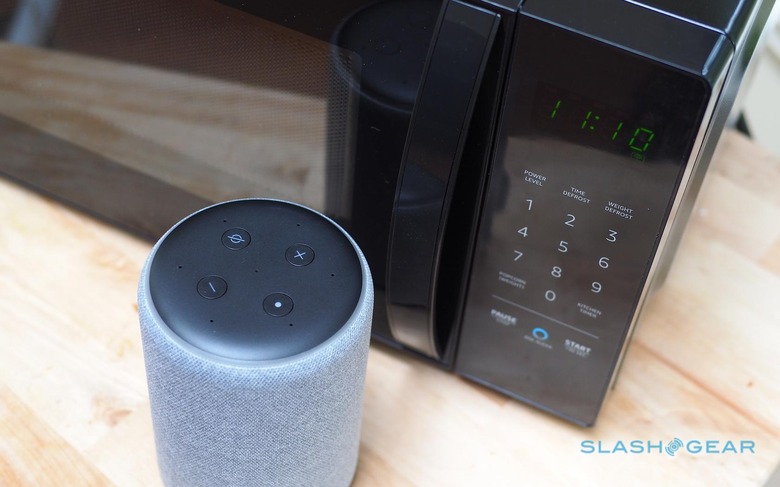
Microwaves, Amazon points out, are one of the most commonly-used kitchen appliances. They're also a strong candidate for the gadget with the most possibilities, but which is used in the simplest way. Most have a variety of quick-cook modes for defrosting, cooking packaged meals, reheating different foods and drinks, and more, but most often we just set the time manually and hover nearby to press the stop button.
That's where Alexa comes in. Rather than stabbing some long sequence of button-presses, instead you can simply ask out loud. Instructions can be simple – "Alexa, microwave for one minute" for instance – or more complex, tapping into a set of quick-cook voice presets Amazon has created. There are "dozens" already, the retailer tells me, with more to come.
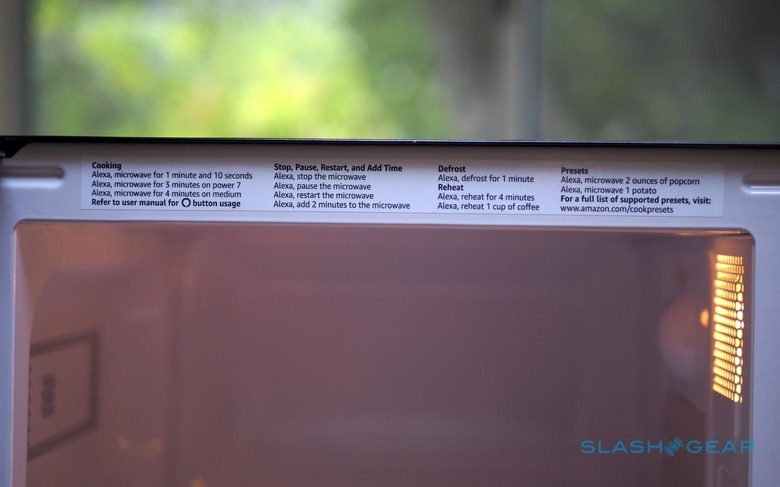
So, I could say "Alexa, reheat one cup of coffee" and have my neglected brew made piping hot again. "Alexa, defrost 10 ounces of vegetables" works, too, as does "Alexa, microwave four potatoes." If you want to end cooking prematurely, you can say "Alexa, stop the microwave."
It's the microwave everyone is buying
The AmazonBasics Microwave has a 0.7 cubic foot capacity, 700 watts of power, 10 power levels, and a turntable inside. According to Amazon, those specifications are no accident. In fact, that's basically the combination of most popular features of every microwave the retailer sells.
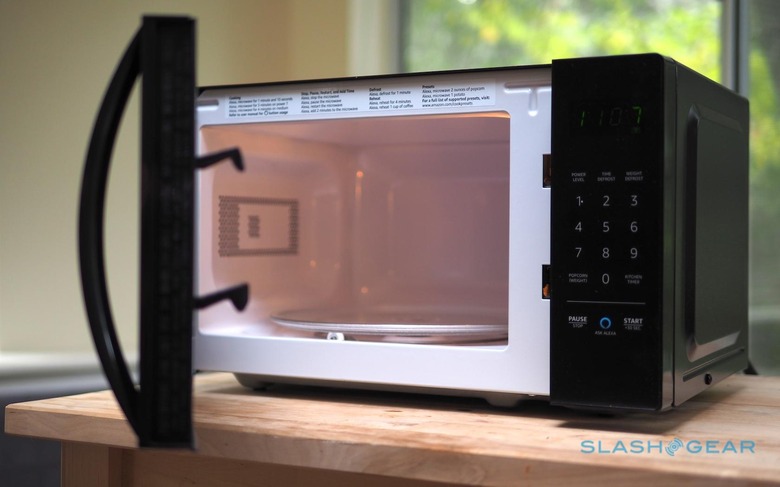
As you might expect, then, it feels fairly average. The $59.99 price tag doesn't leave much room for high-end finishes or luxury features. Instead you get a black metal casing that's low enough to fit on a countertop under the typical wall cabinets. The membrane-type buttons are par for the course here, too. It's not exactly fragile, but neither did I get the feeling that slamming the door or jabbing at the controls would be a great idea if I wanted to prolong its lifespan.
Smart has advantages
A regular, dumb microwave isn't typically too difficult to set up: you plug it in. Amazon's new microwave is almost as straightforward, thanks to the new WiFi simple setup system. As long as you bought it from Amazon direct, and you have an existing Amazon device – an Echo, say, or a Fire TV – connected to your home network, the microwave will use its knowledge of pre-existing devices out of the box. Plug it in, give it a couple of minutes, and eventually Alexa will announce that there's a new device installed and ready to use.
I had to run through the Alexa app instead, though that still only took a couple of minutes. You add the microwave through the app just as you would any other Echo device, sharing your WiFi settings with it from there, and finally assigning it to the nearest smart speaker.
The latter is important, because there's a dedicated Alexa button on the microwave's control panel. There's no smart speaker inside, but pressing it notifies the Echo you assigned to it that you want to control the microwave specifically. It means you don't have to prefix your instructions with "Alexa, microwave..."
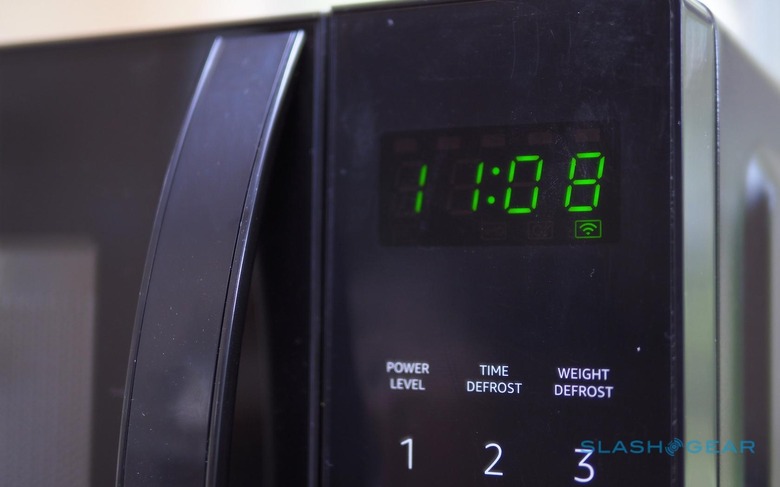
Then there's perhaps my favorite feature. Since the AmazonBasics Microwave is connected, it can automatically set its own clock. That includes changing to daylight saving time and back again.
Let's get cooking
I cook a lot, but I don't tend to use the microwave for much beyond the basics. Reheating leftovers, melting stubbornly solid ingredients, and occasionally defrosting frozen items. Typically, I just start off at a minute on the timer and then go by trial and error from there.
With the Alexa-powered microwave, things changed a little. It was easier to reheat drinks, because I didn't need to remember roughly how long it would take each time. Adding more time from across the kitchen, because I could see something wasn't quite bubbling or melted yet, was also handy.
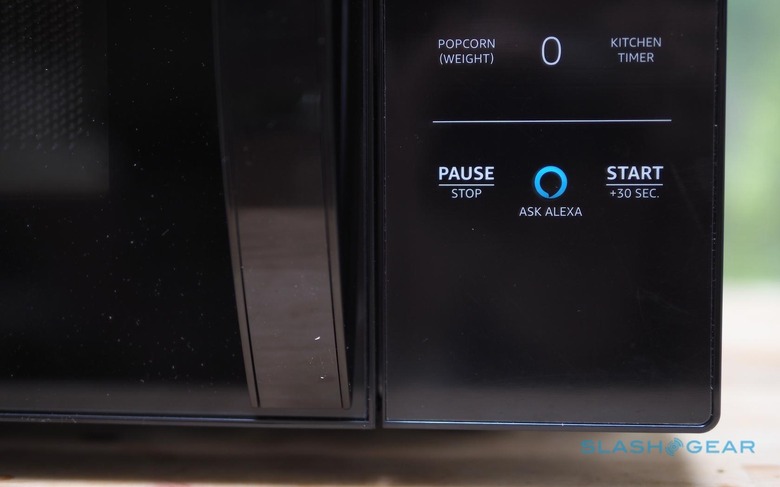
Still, you're at the mercy of Amazon's presets, and they don't always tally with what you're cooking. "Alexa, reheat one dinner plate" is one such command: the microwave doesn't weigh your plate, or know how much food is on it, or what type of meal it is. It's just loading a basic dinner plate preset, and you might find that was too much for your particular meal, or not quite enough.
Popcorn time
The other headline feature of the microwave is Amazon Dash integration. We've already seen how the automated replenishment system can reorder printer toner or other supplies so that you need never run out, or be used with Dash Buttons to trigger a new delivery of laundry detergent or shampoo. In the case of the AmazonBasics Microwave, the focus is popcorn.
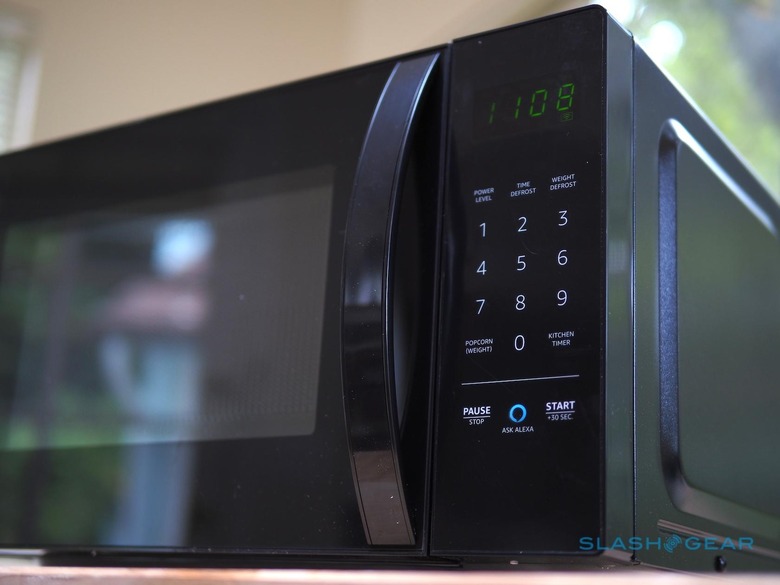
Optionally, when you set the microwave up, you can choose a brand and package size of popcorn available through Amazon. You can even tell it how much you have already in the cupboard. Then, when you're running low – based on how many times you press the popcorn button or ask Alexa to cook it – Amazon will ship new supplies out.
It's clever, particularly if you're Amazon and you want to turn people into regular shoppers. Since we don't eat popcorn, it wasn't especially useful for us. There's also no way to change it for another frequently-cooked food: you can't have the microwave automatically re-order you your favorite packaged meal.
This is about more than just a microwave
It's easy to be dismissive of a connected microwave. There's a strong argument that, if people really are so unconcerned with the presets their existing microwaves offer, maybe they just don't need them at all. Amazon, though, is using the AmazonBasics Microwave as a reference design for something much more significant.
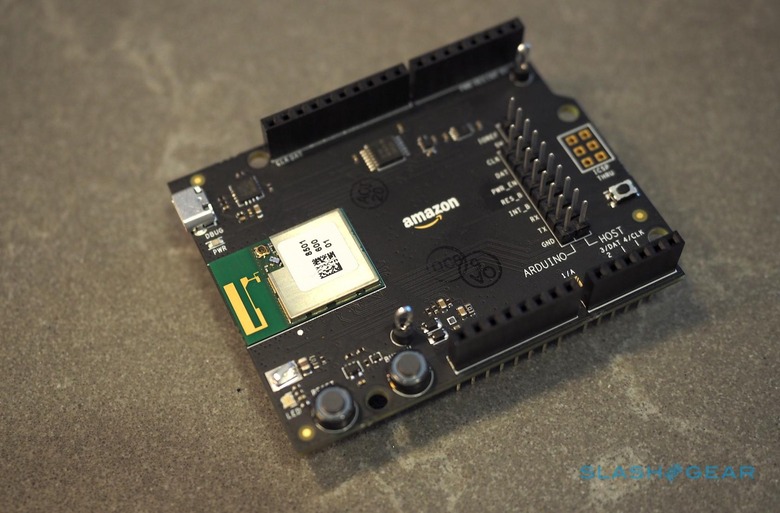
That's the Alexa Connect Kit, and it's the diminutive chipset that bridges the microwave with your WiFi network and, more broadly, the Alexa ecosystem. As Amazon tells it, appliance-makers in the kitchen and beyond wanted to make connected devices, but the price and complexity put them off. This new chip, however, promises to make it far more straightforward.
Connected via a simple serial interface, it links the appliance with Amazon's cloud. The retailer is promising to keep it updated and secure for the life of the device, as well as handling all the Alexa APIs and other cloud services. No subscription fees, no need for appliance-makers to build their own apps. All for a piece of hardware that costs in the order of a cup of coffee.
The AmazonBasics Microwave is an example of how affordable that can all work out to be, though that's not to say that an appliance couldn't be more complex if the manufacturer wanted it to be. You could have a model that weighs the food, for example, or tracks the temperature of what you're cooking.
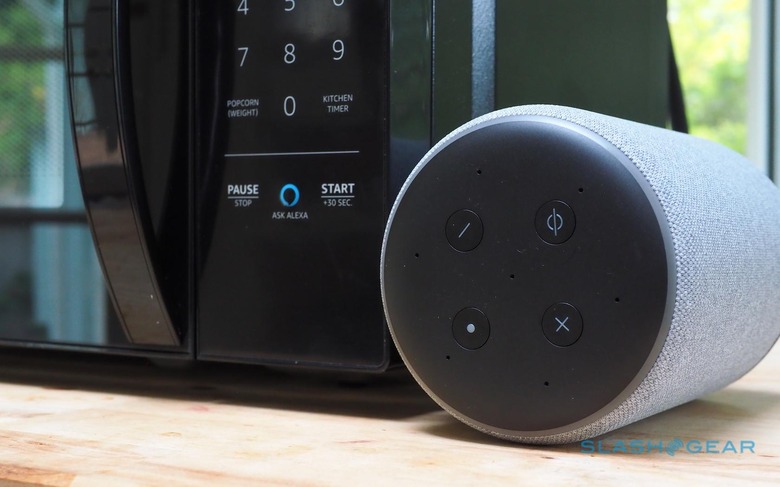
So far, the smart appliances we've seen have been appealing in a geeky way, but priced out of consideration for most. Even if you could afford what's usually a several hundred dollar premium, justifying it is another matter. The more I thought about the potential value of connected devices, though, the more I could see why I might want one.
A washing machine that could notify you, via Alexa, when it's done, and it's time to put wet clothes into the dryer. A dehumidifier that tells you when it's full, or lamps that remind you when their bulbs are nearing expiration, and potentially even order replacements just in time. I wouldn't pay a couple hundred dollars more for features like those, but I'd certainly pay something like $20 more, and that's what Amazon is opening the door to.
Verdict
There are two reviews here, really. First, there's the AmazonBasics Microwave powered by Alexa. Personally, I'd prefer a slightly larger capacity, but for a 700W model $59.99 is competitive – and that's before you even consider the Alexa support. Obviously you'd have to budget for a smart speaker too, like the new Echo Dot 3rd generation, if you don't already have one, but frankly I'd choose Amazon's microwave over rivals just for the sake of never having to set the clock again myself.
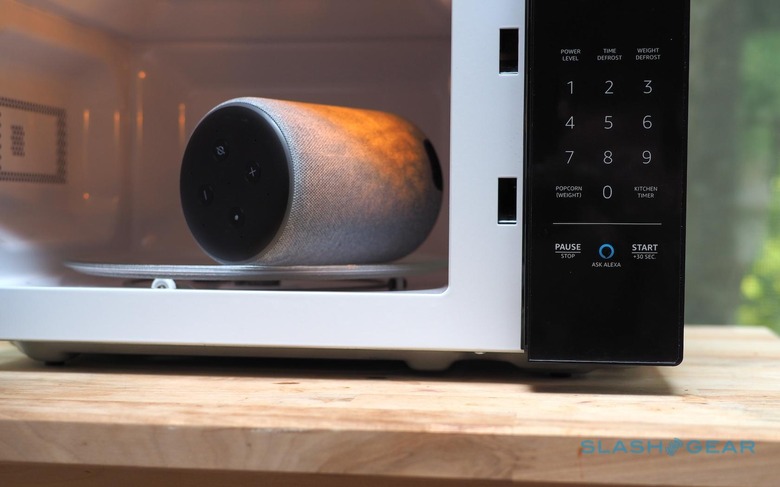
Then there's the Alexa Connect Kit. That's not something you'll ever go out and buy yourself, individually, as a consumer, but it's something that will increasingly be offered as a part of new appliances you bring home. Procter & Gamble, Hamilton Beach, and others are all working on devices using it, Amazon says, lured in by the prospect of smart features without an inflated price tag.
We don't know quite what Amazon's partners have in store in terms of products. If, like Amazon has with this microwave, manufacturers using the Alexa Connect Kit can deliver connected convenience without a huge price premium, though, it's hard to imagine why you'd opt for a "dumb" appliance instead of the smart version. In short, it might be worth getting into the habit of talking to your microwave, because it's only a matter of time before the rest of the devices in your home start listening too.
SlashGear uses affiliate links, and sometimes if you buy something we'll get a commission from the sale





